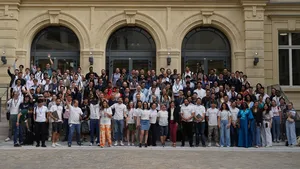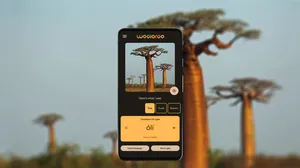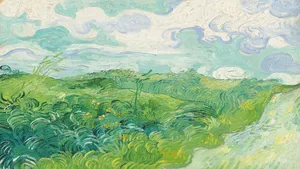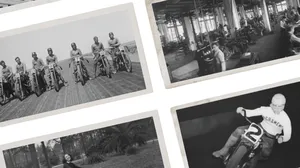Turning Ukrainian landmarks into 3D art

The Dormition Cathedral has stood proudly in the center of Kharkiv, a city in Ukraine’s northeast, since the 1770s.
The church survived 20th-century wars that left many of the city’s buildings destroyed, and in March 2022, just over a week after Russia invaded Ukraine, once again came under threat. As locals sheltered inside, nearby explosions shattered several of the cathedral’s stained-glass windows and damaged its exterior.
No one was hurt and the church still stands, but the bombing was a reminder of how quickly centuries of history can be lost. UNESCO has counted more than 284 damaged cultural sites in Ukraine since the invasion began, according to an August 2023 assessment.
Today, you can get up close to the Dormition Cathedral whether you’re in Kharkiv or California, thanks to a collaboration between Google and Skeiron, a Lviv-based team of preservation experts working to ensure the church and other places like it continue to endure. Since the start of the war, Skeiron has used laser-scanning technology and photogrammetry (methods that help them capture the geometry and colors of a 3D object) to create hundreds of detailed 3D models of Ukrainian landmarks and artifacts. And last year, they worked with Google Arts & Culture to showcase more than 40 of these digital monuments in the Ukraine Is Here exhibition. This exhibition was done in collaboration with the Ministry of Culture and Information Policy of Ukraine as well as various Ukrainian cultural institutions preserving and celebrating Ukrainian art, music, crafts and culture.
The bell tower of the Dormition Cathedral in 3D.
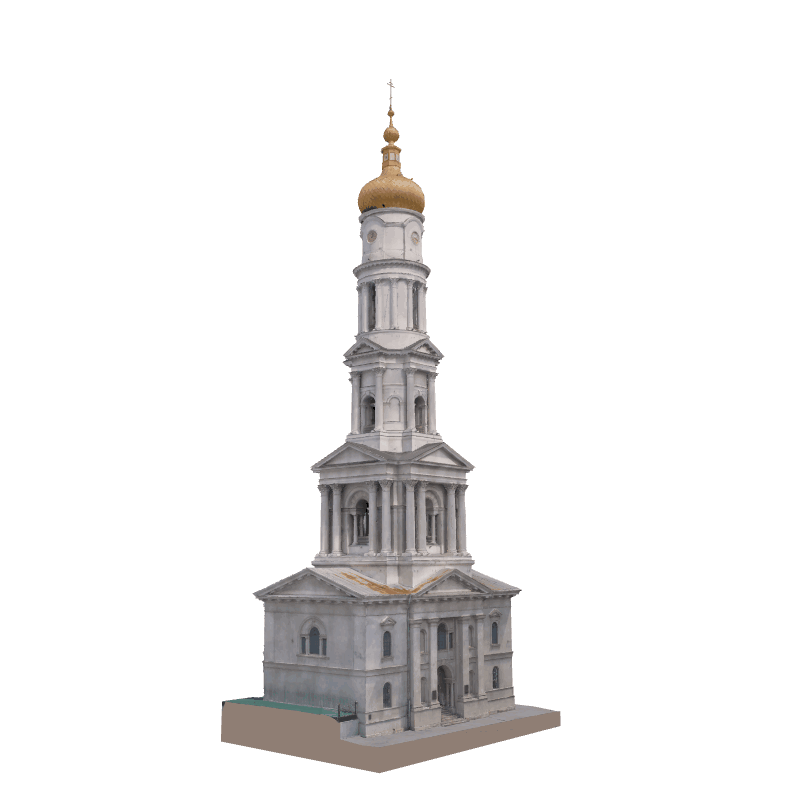
“When Skeiron came to us with this project, we really felt that working on it was the right thing to do,” says Etienne Ferrier, a Google software engineer focused on bringing Google Arts & Culture experiences to Search. “Their mission was preservation, to create these models as references for restoration should any of the places be destroyed. Ours is to make information as accessible to as many people as possible. This was a unique opportunity to work together to do that for these important landmarks.”
But getting the models onto our platforms, and viewable on as many devices as possible, wasn’t as easy as a simple upload. Creating the incredible detail you can zoom in on or turn to view from different angles presented a challenge.
“The high-res files from Skeiron were incredibly large, even though they’ve worked hard to reduce their size,” says Etienne, who’s worked with partners on 3D models of animals, UNESCO sites and NASA spacecrafts. “In order to be a reasonable experience for users, some of them using 3G networks, we aim for files to be no more than 10 MB.”
To shave down the file size while still retaining quality, the Arts & Culture team turned to a group of Googlers dedicated to making 3D assets more accessible for everyone through compression and simplification.
Compression involves shrinking a file so that it’s easier to transfer from a server to something like a cell phone or tablet. Simplification, on the other hand, applies various techniques so that a model renders at a good frame rate even on a less capable device.
“When we’re working with a model with a million faces (surface triangles) that means we have to render those million faces at every frame. If the user has a less powerful graphics processing unit (GPU), it might only be able to render five of those frames per second (fps) — which is a very bad experience; the model is less responsive and slow to load,” explains Igor Vytyaz, a Google software engineer who works on Draco compression and simplification. “If we want that less capable GPU to give users a smooth 60 fps, we need to have fewer faces to render, we might reduce the number of faces down to 30,000.”
Historically, people needed to assess whether a simplified model was close enough to the original to be useful, which could take days depending on the scale of a project. But since 2021, much of the process has been largely automated. Our tools grade the models, automatically run them through combinations of simplification and compression techniques, and re-grade them until they hit a maximum acceptable distortion at a usable file size.
As the Google system reduces the number of faces in a model — here from 100% of the original to 20% — the distortion metric increases. The technology automatically terminates decimation when distortion reaches a maximum acceptable level, like 10.0.
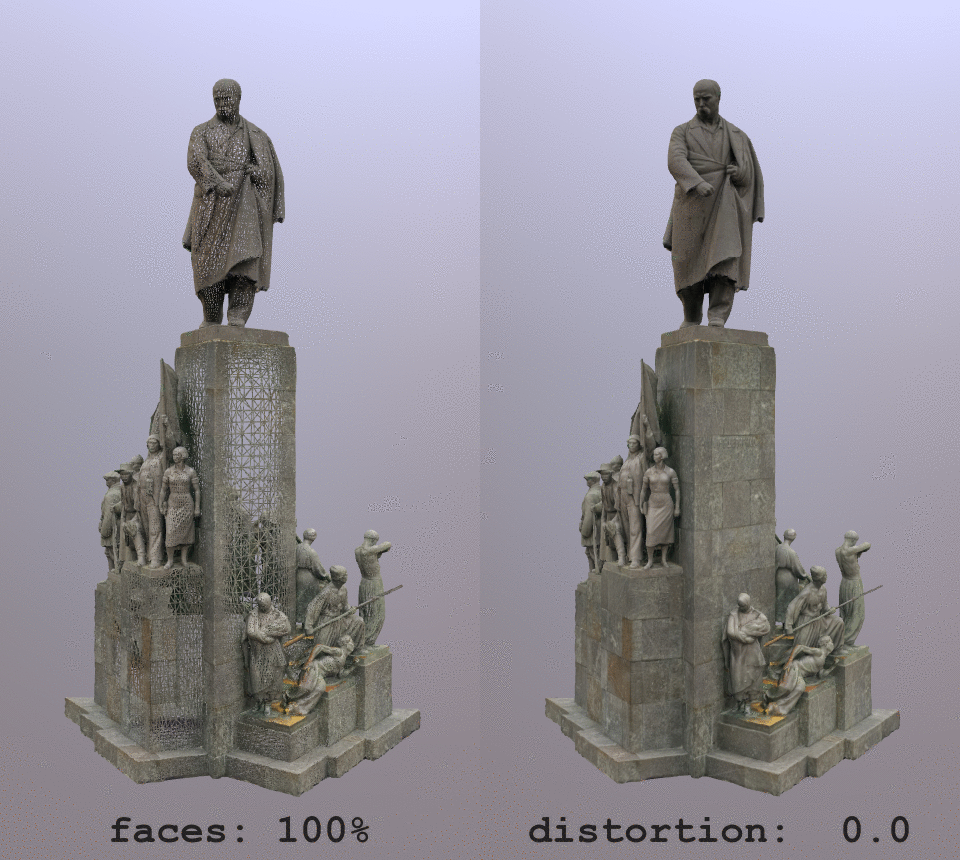
The team got Skeiron’s Ukraine models down to 10 MB or less. But, in doing a final inspection, Igor says some distortion values might have been a touch “optimistic.” In a handful of cases, textures were slightly too blurry, and in others, fine details — like the thin, gilded cross that springs from the top of the Dormition Cathedral’s bell tower — were too distorted. So Igor spent some time manually refining the models, comparing the originals with their simplified versions side-by-side and making adjustments.
“The distortion metric may not pay much attention to these small details, but they stand out to the human eye,” he says. “So I would go in and then limit the degree to which it gets simplified.”
For Igor, who grew up in Kyiv, this was a very personal project. “Seeing all these monuments brought back a lot of warm memories from my time there,” he says. “The Church of Saint Nicholas, which also houses the National Organ and Chamber Music Hall of Ukraine, is actually where I took my future wife on one of our first dates.”
Once the project was live, Igor showed it to his parents, who left Ukraine in 2022 and are now living in France. “They were so impressed,” he says.
As he worked on refining the models, Igor became fascinated by one landmark in particular. “The Golden Gate of Kyiv was the main gate that fortified Kyiv back in the 11th Century, but it was taken apart during the Middle Ages,” he says. “The new Golden Gate, which is part of the Google Arts & Culture collection, is a reconstruction done very recently — but nobody knows exactly what the original looked like. What if we had had technology like this at that point in time — you could probably have restored the gate to its original form and preserved history," he says. "That we’re able to do that now is incredibly powerful.”
